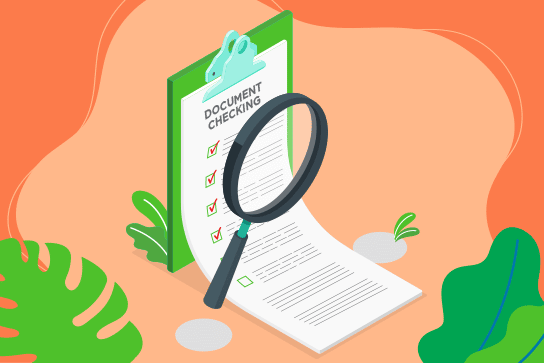LISTEN AUDIO
Last Updated on April 7, 2023 by Ozlinks Education
Subject: Use hygienic practices for food safety
The subject Use hygienic practices for food safety, describes the performance outcomes, skills and knowledge required to use personal hygiene practices to prevent contamination of food that might cause food-borne illnesses. It requires the ability to follow predetermined organisational procedures and to identify and control food hazards.
The unit applies to all organisations with permanent or temporary kitchen premises or smaller food preparation or bar areas.
This includes restaurants, cafes, clubs, hotels, and bars; tour operators; attractions; function, event, exhibition and conference catering; educational institutions; aged care facilities; correctional centres; hospitals; defence forces; cafeterias, kiosks, canteens and fast food outlets; residential catering; in-flight and other transport catering.
It applies to food handlers who directly handle food or food contact surfaces such as cutlery, plates and bowls during the course of their daily work activities. This includes cooks, chefs, caterers, kitchen stewards, kitchen hands, bar, and food and beverage attendants, and sometimes room attendants and front office staff.
Food handlers must comply with the requirements contained within the Australia Food Standards Code.
Elements and Performance Criteria
Elements describe the essential outcomes, and the performance criteria describe the performance needed to demonstrate achievement of the element.
1.Follow hygiene procedures and identify food hazards.
1.1 Follow organisational hygiene procedures.
1.2 Report unsafe practices that breach hygiene procedures promptly.
1.3 Identify food hazards that may affect the health and safety of customers, colleagues and self.
1.4 Remove or minimise the hygiene hazard and report as appropriate for follow-up.
2. Report any personal health issues.
2.1 Report personal health issues likely to cause a hygiene risk.
2.2 Report incidents of food contamination resulting from personal health issues.
2.3 Cease participation in food handling activities where own health issue may cause food contamination.
3. Prevent food contamination.
3.1 Maintain clean clothes, wear required personal protective clothing, and only use organisation-approved bandages and dressings.
3.2 Prevent food contamination from clothing and other items worn.
3.3 Prevent unnecessary direct contact with ready to eat food.
3.4 Ensure hygienic personal contact with food and food contact surfaces.
3.5 Use hygienic cleaning practices that prevent food-borne illnesses.
4. Prevent cross-contamination by washing hands.
4.1 Wash hands at appropriate times and follow hand washing procedures consistently.
4.2 Wash hands using appropriate facilities.
Assessment Requirements
Assessment Requirements for Use hygienic practices for food safety.
Performance Evidence
Evidence of the ability to complete tasks outlined in elements and performance criteria of this unit in the context of the job role, and:
- demonstrate use of safe food handling practices in food handling work functions in line with organisational hygiene procedures on at least three occasions
- demonstrate procedures to:
- identify food hazards
- report unsafe practices
- report incidents of food contamination.
Knowledge Evidence
Demonstrated knowledge required to complete the tasks outlined in elements and performance criteria of this unit:
- basic aspects of commonwealth, state or territory food safety laws, standards and codes as follows:
- meaning of contaminant, contamination and potentially hazardous foods as defined by the Australia New Zealand Food Standards Code
- employee and employer responsibility to participate in hygienic practices
- reasons for food safety programs and what they must contain
- role of local government regulators
- ramifications of failure to observe food safety law and organisational policies and procedures
- health issues likely to cause a hygiene risk relevant to food safety:
- airborne diseases
- food-borne diseases
- infectious diseases
- hygiene actions that must be adhered to in order to avoid food-borne illnesses
- hand washing practices:
- before commencing or recommencing work with food
- immediately after:
- handling raw food
- smoking, coughing, sneezing or blowing the nose
- eating or drinking
- touching the hair, scalp or any wound
- using the toilet
- basic aspects of hazard analysis and critical control points (HACCP) method of controlling food safety
- specific industry sector and organisation:
- major causes of food contamination and food-borne illnesses
- sources and effects of microbiological contamination of food
- workplace hygiene hazards when handling food and food contact surfaces
- basic content of organisational food safety programs
- contents of organisational hygiene and food safety procedures
- hygienic work practices for individual job roles and responsibilities.
Assessment Conditions
Skills must be demonstrated in an operational food preparation area. This can be:
- an industry workplace
- a simulated industry environment.
Assessment must ensure access to:
- fixtures:
- work benches
- refrigeration unit
- sink
- storage facilities
- small equipment:
- assorted pots and pans
- containers for hot and cold storage
- crockery
- cutlery
- cutting boards
- food handler gloves
- glassware
- knives
- packaging materials
- receptacles for presentation and display purposes
- small utensils:
- tongs
- serving utensils
- appropriate facilities for handwashing:
- designated hand washing sink
- antiseptic liquid soap
- single use towels
- warm running water
- food ingredients and ready to eat food items
- current plain English regulatory documents distributed by the commonwealth, state, territory or local government food safety authority Australia New Zealand Food Standards Code
- current commercial food safety programs, policies and procedures used for managing food safety.



